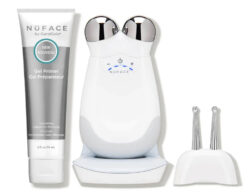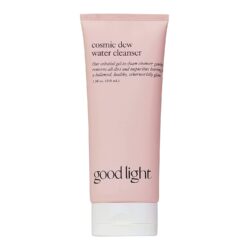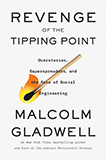A few days ago one of my favorite blogs, The Art of Manliness (yes I know I’m a girl but I still enjoy its content), published a post called A Man’s Guide to Dry Cleaning.
The article was well-researched and well-written, and chock full of helpful information. However, it was apparent from the start that the author does not have any first-hand experience in dry cleaning.
I asked myself why I couldn’t do it better myself.
My parents are Korean immigrants who have been in the dry cleaning business for 22 years. I have helped out at the store since I was 7 years old, and continue to do so to this day. Sure, I may not run the store, or even work full-time (I only started to officially work part-time last month), but I am confident that I have assisted my parents enough to have gained the experience required for this post.
I have decided to make this a 2-part series. The first will discuss dry cleaning in general, and more importantly, the different methods of dry cleaning — the pros and cons, as well as the environmental/health impacts of each. The second will provide an insider’s advice as to how to make the best of your dry cleaning experience.
If you have any questions, or would like any additional issues addressed, please feel free to leave a comment or shoot me an email using my contact form.
Let’s begin.
Dry cleaning is the use of non-water substances to remove soils and stains from clothes. The most typical use of dry cleaning uses a chemical called tetrachloroethylene (perchloroethylene) — more commonly referred to as “perc” — to clean the garments. Perc is by no means a “dry” agent; in is in fact in liquid form and the only reason the word “dry” is used in “dry cleaning” is because when the garments come out of the machine, they are dry.
I will not talk about the multiple steps involved in cleaning and preparing each garment. There are tons of web resources that discuss this topic and if you wish, you can go look for yourselves. What I do want to examine are the most popular methods of dry cleaning (aka the dry cleaning chemicals), what they are, and the pros and cons associated with each.
Perchloroethylene, or “Perc”
Perc is the process long-favored by dry cleaners and still in use by the great majority of dry cleaners in the U.S.. It is inexpensive, cleans remarkably well and relatively safe if handled properly.
pros: inexpensive, and no other chemical comes close to it when it comes to cleaning garments well
cons: it is a toxic chemical that must be handled with care and disposed of properly. It has been known to “wear down” fabrics over time. It has also been linked to both health and environmental issues.
Most of my readers are probably aware of the cancer risks associated with perc. To be more specific, the International Agency for Research on Cancer has classified perchloroethylene as a 2A carcinogen, which means that it is “probably carcinogenic to humans.”
Is this a cause for concern? Of course. I worry every day that my parents will develop cancer as a result of their chosen profession. But the fact remains that at this point, there exists no alternative that can clean clothes as well at a similar price point.
Hydrocarbon, or “Organic” Dry Cleaning
I see many dry cleaners these days touting “organic dry cleaning.” When cleaners advertise the use of “organic” or “nontoxic” dry cleaning, what they are almost always implying is that they use isoparaffin hydrocarbon, which, like perc, is a synthetic petroleum distillate and just as toxic. The only reason they are able to label their process as such is via loopholes in labeling laws.
pros: the dry cleaning establishment is able to advertise “safer” methods
cons: it is no safer than perc, and has a slightly weaker cleaning ability than perc
CO2 Cleaning
CO2 (carbon dioxide) cleaning uses CO2, in liquid form, as a cleaning agent in a pressurized environment. When it was first announced a few years ago, it gained much publicity and reports hailed it as the wonder process. However, when put to the test by actual dry cleaners under various condition, it proved to be a poor cleaning agent.
pros: no known health risks, environmentally safe
cons: a poor cleaning agent, machinery and required supplies are expensive
Solvair (Reformulated Rynex)
The Solvair system was developed to improve on the CO2 system via the use of propylene glycol ether to clean, and CO2 to rinse. The problem with the Solvair system is that propylene glycol ether has been proven to be just as toxic as perc, and studies have shown it to have potentially carcinogenic properties as well (mainly, the presence of tumors in mice).
Solvair has recently reformulated itself in order to decrease potential health risks. However, it has yet to undergo a formal evaluation of its toxicity levels.
pros: environmentally safe
cons: no formal testing has yet to be performed on its health risks, machinery and supplies are expensive
GreenEarth (Volatile Methyl Siloxane)
GreenEarth has been hailed as the safest and most environmentally-friendly dry cleaning process since its inception in 1999. It is mild on clothes, does not fade colors, and has a softening effect.
However, it should be noted that volatile methyl siloxane, or decamethylcyclopentasiloxane, has recently been found to cause uterine tumors in rats. Decamethylcyclopentasiloxane is also under scrutiny for its apparent persistence in the environment and in human and animal tissues.
pros: is probably the #1 choice for health and environmentally conscious dry cleaners in the U.S.
cons: tests are still underway for the potential health and environmental hazards listed above
Wet Cleaning
Wet cleaning uses water, and as such is considered the safest of all the dry cleaning processes (well, technically it isn’t dry cleaning). Water is used in a precisely controlled conditions so that “dry clean only” garments can be washed in water.
The problem with wet cleaning is that it is a lengthy and involved process. The water temperature and levels must be carefully adjusted for different types of garments, fabrics, and even the stage of the washing cycle. Many cleaners stay away from this process for this reason; it takes a true professional to be able to clean each garment without shrinkage or damage.
pros: is the safest and more environmentally friendly
cons: high potential for shrinkage and damage, involved and more difficult process for cleaners
What you should garner from the information I’ve collected above is that there are pros and cons to every dry cleaning process. It really is a trade-off: do you prefer cleaner clothes (at a cheaper price), or do you care more about your health and/or the environment?
The answer to the question seems simple when it is written out like this, but what you have to realize is that many of the cleaners using the safer methods are forced to charge much higher fees in order to make a profit, not to mention that many of the safer methods do not do a good job cleaning!
What would be my unsolicited advice as someone who is part of a dry cleaning family? (Yes, many of my aunts and uncles run dry cleaners too.)
- Do your research on the various dry cleaning methods. I have tried my best to outline them above, but there is a lot more information available for your perusal.
- Make an educated decision based on your research. I am not telling you which method is better/worse. That choice should be up to you.
- Dry-clean your clothes as least as possible. Yes, I may be driving business away the tens of thousands of dry cleaners in the country (including my parents), but I truly believe that only dry cleaning your clothes when needed is the best for your health, the environment, and your clothes.
My parents’ dry cleaner uses perc and wet cleaning. They choose to only run the perc machine for certain fabrics, soils and stains. Everything else (about 40%) gets washed in water with the help of a nontoxic detergent.
I’m not sure about other states, but the state of New York has very strict laws concerning dry cleaning establishments that use perc. My parents’ store undergoes monthly inspections, must abide by stringent laws regarding the handling and disposal of perc and its by-products, and even pays hefty fees to both the state and the county so that the regulations remain in place and continue to improve.
I personally think that they have made a good compromise until a good alternative for perc comes along.
How did you decide on a dry cleaner? Are you now re-thinking your choice?
Next up: how to make the best of your dry cleaning experience!
for more information, please read:
A Man’s Guide to Dry Cleaning — The Art of Manliness
Dry Cleaning — Wikipedia
Alternative Solvents: Health and Environmental Impacts — California Environmental Protection Agency
The International Agency for Research on Cancer — The World Health Organization
Posts Tagged “Dry Cleaning” — The Green Way Blog






 I like books, gadgets, spicy food, and art. I dislike shopping, hot weather, and the laws of entropy. Although I am a self-proclaimed computer nerd, I still have a love for handbags and makeup... and I am always teetering on high heels. To learn more about me, visit the
I like books, gadgets, spicy food, and art. I dislike shopping, hot weather, and the laws of entropy. Although I am a self-proclaimed computer nerd, I still have a love for handbags and makeup... and I am always teetering on high heels. To learn more about me, visit the 


Hello,
You have done a pretty thorough job of sumarizing drycleaning. I have owned several Cleaners in San Diego since the late seventies, using perc from 1978 til 2000. I now own CO2 drycleaning stores, since 2001. Your opinion that CO2 has poor cleaning abilities is innaccurate. While it won’t dissolve Khouri Gum like perc, (hence a low KB value), it also is far less harsh and damaging to garments than perc. PLUS it leaves no funky chemical residue. To me, and my customers, THAT is CLEANER, not less clean. You, or anyone, are invited to tour my Hangers Cleaners in SD (the one featured in Newsweek, and on MSNBC.com) to see the great results firsthand. Or one could visit findco2.com for a closer CO2 cleaner.
Gordon Shaw
Hangers Cleaners
San Diego
Hi Gordon,
Thanks for your comment. While it’s true that CO2 cleaning is one of the most eco-friendly alternatives to perc, I have read numerous sources in my research that state that CO2 cleaning does not get out stubborn stains and soils as well as perc and that a double or multiple washings are required to get the same effect.
Here are a few of the sources where I got this information:
http://www.drycleanerssecret.com/news/press/green-dry-cleaning.htm
http://www.thegreendrycleaner.com/a-dry-cleaning-primer-the-different-processes/co2.html
http://www.pdclean.org/DLIwhitePaper.html
The last link, in particular, states: "Because solvency is very low, spotting requirements for a traditional CO2 system can be considerably higher than with other solvents."
In addition, CO2 machines can cost up to $150,000 which most mom-and-pop stores cannot afford. If consumers can find a CO2 cleaner nearby, then good for them! I encourage them to go check it out and see the results for themselves (and maybe even share them with us). But the fact remains that due to its prohibitive costs, the majority of cleaners have yet to convert to CO2.
(I am not bashing CO2 cleaning in any way. I just wanted to back up my research with the sources where I got the information.)
Hello,
Thanks for your thorough report and your reply. I agree that CO2 is pricier, I just question your comment regarding its cleaning characteristics. I believe leaving 100% of all garments cleaned completely free from the annoying chemical residue that off-gases, is cleaner than reducing the amount of garments that require additional manual spotting from say…30% to 15%. Heavily soiled garments need additional work regardless of solvent, but the lighter soiled garments do not need to be immersed in harsh chemicals. As for your sources…one is woolite, one is a NY cleaner who uses D5 Silicone (which you do cover acurately), and one is a trade association representing almost exclusively traditional solvent users. Try Consumer Report, 2003. Or Green Apple cleaners. Or if you want the extreme environmental view…Green Peace.
Of course the best way to realize the amazing difference of a nice cashmere sweater cleaned in CO2 is to try it. FWIW, people mail me clothes from all over. Send me a sweater and I’ll give you a complementary cleaning.
Gordon
Hangers Cleaners
Hi Gordon,
I’m sorry if I seem defensive or if it seems like I’m saying cleaners using CO2 cannot clean their garments well; really, I’m not. I want to clarify once again that I am not saying one method is superior to another. Everyone should educate themselves and make their own personal decision. There will always be sources supporting one method over another, and I fully recognize that not all studies are unbiased. Heck I’m sure there are even sources that say that perc is proven to have no negative effects at all!
Again, I encourage anyone who’s reading this to try any methods that seem to interest you, and if you’re in the San Diego area, to give Hangers Cleaners a try.
Hello I’m the owner of OrganiCare Fine GarmentCare Centers located in Phoenix, AZ. I agree with not using perc. and looking for a cleaners that uses alternatives to perc. Wet Cleaning is offered at both of my plants, we can clean any type of fabric in water! We will be changing out our DF 2000 or hydrocarbon dry cleaning machines for CO2 next summer. Co2 and Wet Cleaning are the only real organic green technologies of cleaning garments don’t be fooled by your neighborhood cleaners saying that their Organic. I have had an alternative to Perc. called df2000 or hydrocarbon for years before co2 and wet cleaning were real options for garment care. My thoughts are to always stay on top of new technologies in the market place to be as green as possible. That’s why we are implementing co2 and we have already implemented wet cleaning. Of course we are carbon neutral as well as our vans and we offer bio degradable poly bags, re useable garment bags, promote clients to recycle their hangers, use natural gas boilers, and all the other greener options that we can. That should be standard in your cleaners. Complementary delivery and pick-up of your garments from your home or office should be standard as well at your local cleaners. This lessens the amount of emissions of 100’s of clients coming to your cleaners every week. Feel free to call or email for any questions that you might have. 480-585-3936 or brad@organicdrycleaners.com. P.S. please don’t be really fooled by any cleaners that say they use Green Earth solvent, this solvent number one doesn’t clean anything on its best day and is made out of silicone. Canada is looking towards banning this solvent. It sounds really good but it doesn’t work and is not a green alternative at all.
Thanks Brad Keeling President organiCare Fine GarmentCare Centers www.organicarecleaners.com
I really love your site.. Pleasant colors & theme. Did you build this website yourself?
Please reply back as I’m hoping to create my own site and would love to learn where you got this from or exactly what the theme is named. Thank you!
Fantastic summary. How about an update on K4?
Nice article on dry cleaning, but as a consumer, I don’t care that much about the process or the chemicals used – I just want my clothes as clean as possible with as little wear-and-tear from the dry cleaning as possible.
I am a guy trying to find info about the care and cleaning of my garments, and I linked here from The Art of Manliness. Looking at the posts here, it seems that your article appeals to those in the industry while The Art of Manliness was written more to a consumer about how best to care for a wardrobe with dry cleaning.
I have shopped around for a good dry cleaner, and it is hard to find a business that will take particular care of clothes. My biggest problem is that expensive Italian wool pants are pressed at too high a temperature and they come back from dry cleaning with a sheen that they did not have before the dry cleaning.
Anyways, maybe you can answer some questions that I cannot seem to find answered anywhere on the web about dry cleaning.
1) If a garment says “Dry Clean Only” does that mean that it absolutely cannot be washed?
2) If a garment is washed once, will dry cleaning at a later date ruin the article – or vice versa – will washing after a series of dry cleanings ruin it?
3) I would like to launder my expensive Tommy Bahama silk shirts that say dry clean. Will they hold up from a gentle hand wash, or a hand wash cycle in a front loader machine?
4) Can light colored linen pants that say “Dry Clean Only” be laundered without ruining them? And same as question 2 – If I launder the linen pants, will a later dry cleaning adversely affect the fabric?
Thank you for any reply you can give. I look forward to your reply since you have work experience in the dry cleaning business and a lot of articles I have read on other sites are dubious because of the lack of industry knowledge by the person posting.
In response to Tim. In my years of experience if a garment has been tested and displays care instructions (such as your silk shirts) this should always be followed. While hand washing and a low tumble dry might not ruin the fabric in this instance it will cause you colour loss. Many garments can be laundered and dry cleaned with out any averse effects. I would always advised people to buy items that can be cleaned either way (that way any stain should be able to be removed.) If in doubt about any item of clothing ask your dry cleaners I will always tell my customers that they can wash an item. Regarding your coment about your trousers coming back with a sheen after pressing, I use a press so this cant happen, and if an iron was used it most likely would have a protective plate to avert this. Ask your dry cleaners what process they use, as a sheen is more typical of the item not receiving a good enough or regular clean
An outstanding share! I’ve just forwarded this onto a
colleague who has been doing a little homework on this. And he actually ordered me dinner due to the fact that I discovered it for him…
lol. So allow me to reword this…. Thanks for the meal!!
But yeah, thanx for spending the time to discuss this matter here on your website.
Feel free to surf to my web site; Samurai Siege Cheats
Hello,
Great posts and good info. A little off topic here: I am interested in opening a dry cleaners and would be my first time. I am located in the Middle East Kuwait. Do you happen to know what is the average annual profit scheme. I know if would differ from state to state (with regards to inflation, tax, federal etc) but an estimated ballpark figure would be handy.
Also I looked into the Dry Cleaning Institute as a possible place to get professionally certified. Does anyone consider this stamp of ‘certification’ handy as a marketing benefit? Or can you get away with having a spacious, clean, customer ready and friendly establishment ?
Hope you can help with these. Thanks again,
SIX YEARS…and no Part 2?
Where is it?
No link at the end of Part 1!
Did you ever publish a part 2 of Dry-Cleaning from an insider perspective?
Thank you for sharing that information! My Dad also owns a Dry Cleaner. The last couple years I’ve had to help out a bit more and the process has lead me to learn more about the dry cleaning process. Especially the chemicals that get used. Thanks for doing a thorough examination of the different processes. 7 years later and I still feel like there needs to be more innovation in this space to have a better alternative.